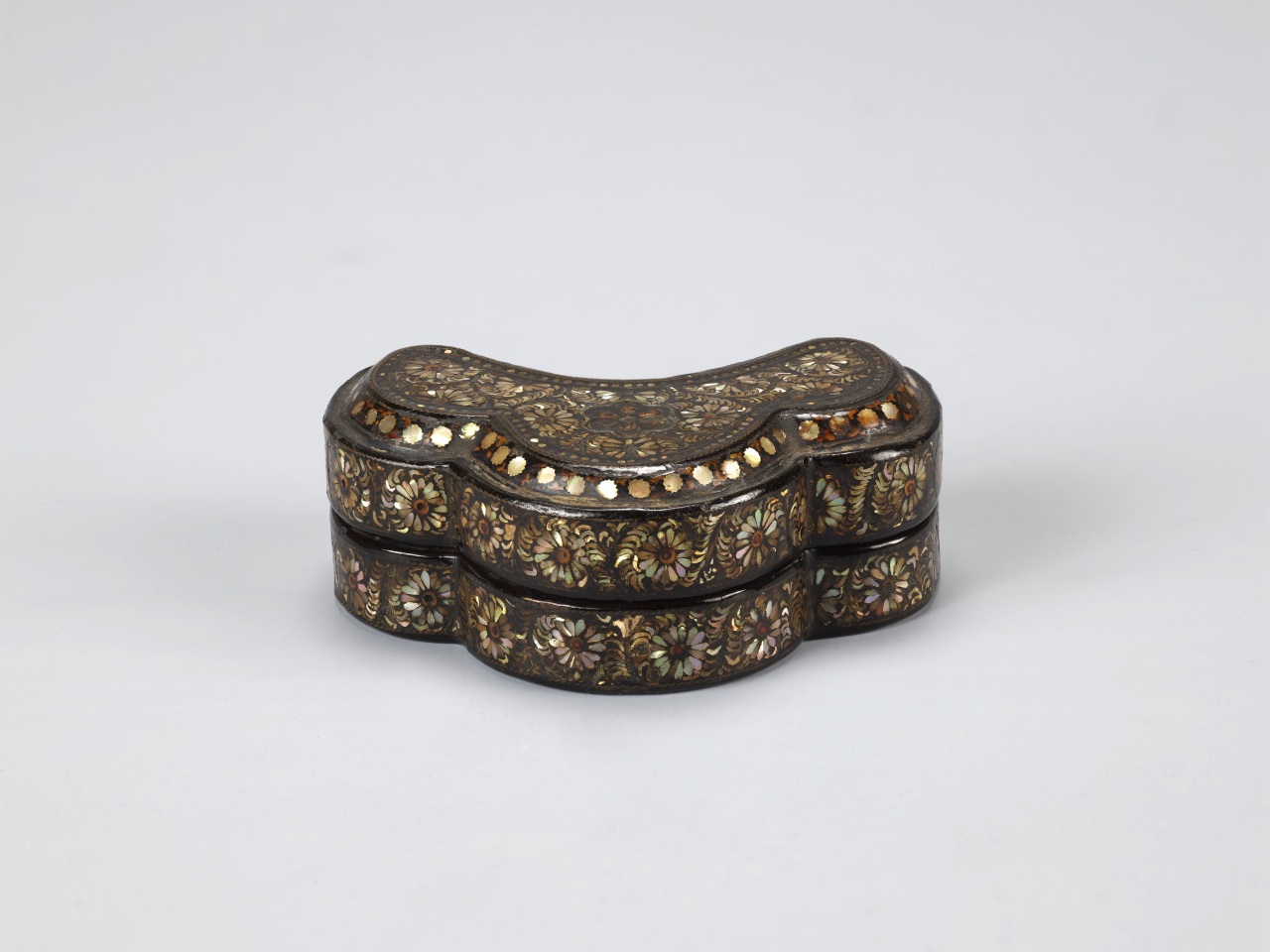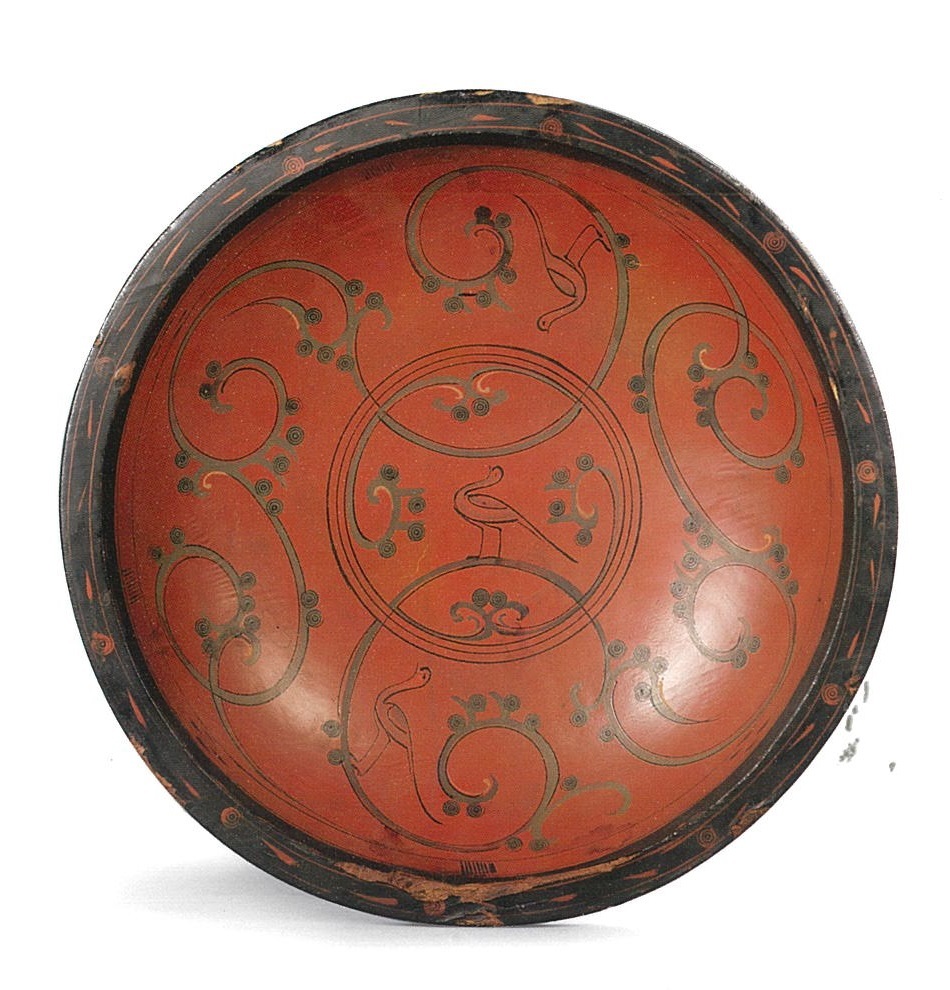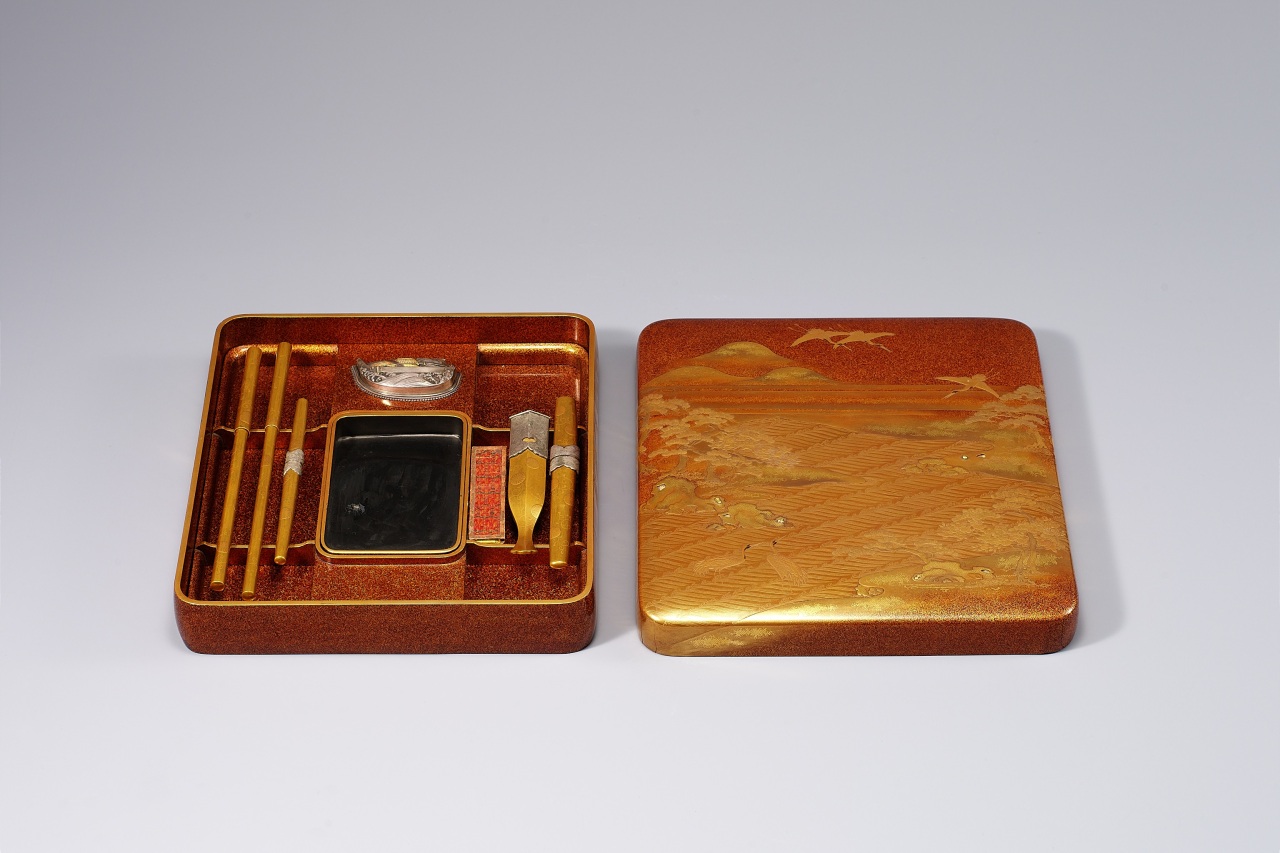Ancient art of lacquer on show at Asian lacquerware exhibition
National Museum of Korea exhibition highlights artistic, practical elements of lacquer
By Kim Hae-yeonPublished : Dec. 21, 2021 - 16:46

The National Museum of Korea launched the special exhibition “Ottchil, the Coated Splendor of Asian Lacquerware” on Tuesday, showcasing some 260 pieces of lacquerware produced in different parts of Asia.
Lacquer, called “ottchil” in Korean, is a natural paint that has been used in Asia since ancient times. The water-repellent and insect-repellent aspects of lacquer increases the longevity of the objects, while adding a beautiful luster to them.
Lacquer crafts are time and labor intensive. It takes several months to extract lacquer from the lacquer tree, purify it and make it into paint. Afterward, the production requires yet more patience, repeating the process of painting and drying. The passage of time is piled up in a single piece of lacquerware, some of which have survived for thousands of years.
Owing to this quality, lacquer has established itself as an important craft technique in Asia, flourishing into diverse products with regional characteristics.
The opening section of the exhibition, “Meeting Lacquerware,” introduces the foundations of lacquerware art, such as lidded boxes and dishes, along with pottery and metalware that developed through mutual influence. Videos are provided to explain the detailed lacquer process.
The “Decorating Lacquerware” section showcases three main decoration techniques. Refined lacquer is a colorless paint that turns brown when applied to wooden objects. Traditionally, the craftsmen mixed iron oxide or copper-red pigment to create black and red colors. The two contrasting colors were used to draw pictures and patterns for decoration.
The technique of decorating lacquerware with precious materials such as gold and silver also emerged. The “pyeongtal” technique in use during the Unified Silla Kingdom was one such technique, involving the attachment of a pattern of gold and silver plates onto a lacquered object, lacquering it again and polishing back the top layer to reveal the pattern.
Lacquer, called “ottchil” in Korean, is a natural paint that has been used in Asia since ancient times. The water-repellent and insect-repellent aspects of lacquer increases the longevity of the objects, while adding a beautiful luster to them.
Lacquer crafts are time and labor intensive. It takes several months to extract lacquer from the lacquer tree, purify it and make it into paint. Afterward, the production requires yet more patience, repeating the process of painting and drying. The passage of time is piled up in a single piece of lacquerware, some of which have survived for thousands of years.
Owing to this quality, lacquer has established itself as an important craft technique in Asia, flourishing into diverse products with regional characteristics.
The opening section of the exhibition, “Meeting Lacquerware,” introduces the foundations of lacquerware art, such as lidded boxes and dishes, along with pottery and metalware that developed through mutual influence. Videos are provided to explain the detailed lacquer process.
The “Decorating Lacquerware” section showcases three main decoration techniques. Refined lacquer is a colorless paint that turns brown when applied to wooden objects. Traditionally, the craftsmen mixed iron oxide or copper-red pigment to create black and red colors. The two contrasting colors were used to draw pictures and patterns for decoration.
The technique of decorating lacquerware with precious materials such as gold and silver also emerged. The “pyeongtal” technique in use during the Unified Silla Kingdom was one such technique, involving the attachment of a pattern of gold and silver plates onto a lacquered object, lacquering it again and polishing back the top layer to reveal the pattern.


Regional lacquer crafts from different parts of Asia are showcased in the “Revealing Regional Characteristics” section. In Korea, lacquerware was sometimes inlaid with mother-of-pearl, whereas in China, lacquerware was carved, engraving multiple layers. In Japan, maki-e lacquerware flourished, in which gold powder is sprinkled on the lacquer.
“Transcending Boundaries” shows the changes in lacquerware beyond regions, in all walks of life. In the second half of the Joseon era, lacquerware gradually expanded to daily items as they became more accessible to the public. In the 17th century, lacquerware made in Japan and China was exported to Europe, introduced as part of the Asian style in the West.
The exhibition is open until March 20, and proof of full vaccination or PCR-negative confirmation is required upon entrance.
By Kim Hae-yeon (hykim@heraldcorp.com)
“Transcending Boundaries” shows the changes in lacquerware beyond regions, in all walks of life. In the second half of the Joseon era, lacquerware gradually expanded to daily items as they became more accessible to the public. In the 17th century, lacquerware made in Japan and China was exported to Europe, introduced as part of the Asian style in the West.
The exhibition is open until March 20, and proof of full vaccination or PCR-negative confirmation is required upon entrance.
By Kim Hae-yeon (hykim@heraldcorp.com)







![[Graphic News] More Koreans say they plan long-distance trips this year](http://res.heraldm.com/phpwas/restmb_idxmake.php?idx=644&simg=/content/image/2024/04/17/20240417050828_0.gif&u=)
![[KH Explains] Hyundai's full hybrid edge to pay off amid slow transition to pure EVs](http://res.heraldm.com/phpwas/restmb_idxmake.php?idx=644&simg=/content/image/2024/04/18/20240418050645_0.jpg&u=20240419100350)






![[From the Scene] Monks, Buddhists hail return of remains of Buddhas](http://res.heraldm.com/phpwas/restmb_idxmake.php?idx=652&simg=/content/image/2024/04/19/20240419050617_0.jpg&u=20240419175937)

![[KH Explains] Hyundai's full hybrid edge to pay off amid slow transition to pure EVs](http://res.heraldm.com/phpwas/restmb_idxmake.php?idx=652&simg=/content/image/2024/04/18/20240418050645_0.jpg&u=20240419100350)

![[Today’s K-pop] Illit drops debut single remix](http://res.heraldm.com/phpwas/restmb_idxmake.php?idx=642&simg=/content/image/2024/04/19/20240419050612_0.jpg&u=)